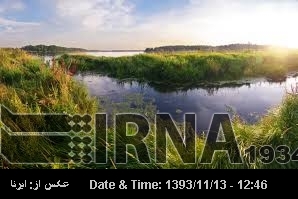Khaled Rabiei, the head of Natural Resources and Environment Association of Khuzestan province made the announcement adding that wetlands are drying up across the nation due to shortage of precipitation and giving rise to dust storms, according to Monday's edition of 'Iran Daily'.
The official said Hurolazim Wetland, which was once home to different birds and marine species and enjoyed pleasant weather, has itself become a source of particulates.
Rabiei called for a massive turnout and requested residents to gather for “water donation” to their nearest wetlands.
There are many wetlands in the province, including Shadegan, Miangaran, Bamdej and Hurolazim.
Residents of Ahvaz, the capital city of Khuzestan province, are breathing in air polluted by dust storms and tiny particles, which have reached unprecedented level.
Ahmad Reza Lahijanzadeh, the head of Khuzestan province’s Department of the Environment, announced on Jan. 29 that the density of dust pollution is over 10,000 micrograms per cubic meter in Ahvaz.
“Ahvaz is experiencing dust pollution, which is 70 times higher than the standard level,” he said.
Schools were closed in 13 cities of Khuzestan to protect children on Saturday.
However, Khuzestan is not the only Iranian province where wetlands have dried up or are on the verge of drying up. The water level of Orumieh Lake, located in West Azarbaijan province, has also declined sharply.
Experts have warned that the conditions of the lake could worsen, afflicting nearby residents with salt storms.
Global deals
The first global treaty dealing with biodiversity was the Ramsar Convention, predating the Rio processes by 20 years.
Ramsar aims to conserve wetlands, the usefulness of which has been undervalued — even the eminent French naturalist of the 18th century, the Comte de Buffon, advocated their destruction — and suffered large losses in recent decades.
Far from being wastelands, wetlands provide invaluable services, replenishing aquifers that supply drinking water and filter out harmful pollutants. By maintaining a healthy environment, wetlands help ensure human wellbeing.
While the Ramsar Convention has had to deal with a broader spectrum of wetland issues over the years, it should be remembered that its full title includes “waterfowl habitat”.
And in AEWA, Ramsar has a strong ally with a clear focus on waterbird conservation.
The African-Eurasian Waterbird Agreement (AEWA) is an intergovernmental treaty dedicated to the conservation of migratory waterbirds and their habitats across Africa, Europe, the Middle East, Central Asia, Greenland and the Canadian Archipelago.
The areas designated as Ramsar Sites form an important part of the network of breeding, feeding and stopover grounds that are indispensable to the survival of the 255 bird populations listed under AEWA.
Ramsar Sites are vital hubs in the network of habitats that constitute the African-Eurasian flyway along which millions of birds migrate in the course of the annual cycle. They include habitats as diverse as the Wadden Sea in Europe and the Banc d’Arguin in Mauritania, both designated as UNESCO World Heritage Sites and important staging posts for birds migrating between Arctic breeding grounds and wintering sites deep in Africa.
“Wetlands for Our Future”
Despite being often far apart geographically and different morphologically, these habitats are inextricably linked by the birds that frequent them.
The definition of “wetland” extends to fish ponds, rice paddies, saltpans and some shallow marine waters, so Ramsar has sites of significance to other species covered by the Convention of Migratory Species, under which AEWA was concluded.
Fragile wetland ecosystems fall victim to manmade accidents – the explosion of the Deepwater Horizon oil platform in the Gulf of Mexico and the Sandoz chemical works fire in Basel, Switzerland, in 1986 being just two examples of countless incidents, both leading to the death of thousands of birds and fish.
Government representatives will gather in Paris later this year in the latest effort to seek agreement on the steps necessary to arrest the causes of climate change.
Wildlife is already feeling the effects and one of the best ways to ensure that animals can adapt is to ensure that there are enough robust sites providing the habitat and food sources at the right time and in the right place.
The theme chosen by the Ramsar Convention for this year’s campaign is “Wetlands for Our Future” and there is a particular emphasis on the role of young people. While wetlands are vital for humans, they are no less important for the survival of wildlife and to a great extent depend on the birds that live in them.
**1425

Khuzestan Prov., Feb 2, IRNA - Residents of Khuzestan province have been urged to pour one liter of water each into the province’s wetlands in a symbolic manner to mark the World Wetlands Day on February 2.

